Introduction
This gear guide represents my personal recommendations for backpacking gear that is durable, lightweight, versatile and offers a very high level of performance for the cost.
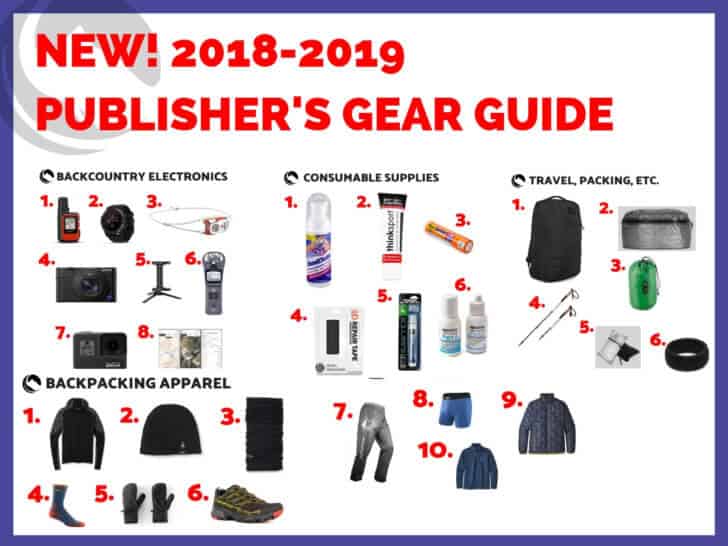
This Gear Guide is for:
- Backpackers who want reliable gear that’s been tested and proven.
- Backpackers who want to share this gear guide with people who buy them gifts for the holidays, birthdays, etc. Or heck, this could be your wedding registry!
- Friends and family members of backpackers looking for some gift ideas that aren’t hacked together by an unknowing journalist, or by a publisher receiving paid placements from manufacturers looking for advertising spots.
Gear with an asterisk*
My biggest gripe with most gear guides you see on blogs and magazine websites are that they include gear the writer/publisher has never even touched. The gear is selected based on its sales potential and ability to deliver affiliate revenue back to the site owner. Yes, there are affiliate links in this gear guide as well (see the affiliate disclosure at the end of this article) but only when they make sense – this gear guide contains the gear I actually use on a regular basis.
In addition, I’ve marked gear that I take on almost every trip with an asterisk (*), so you have an idea of the things that I consider nearly indispensable for backpacking.
About this 2018-2019 update
This is an updated version of the Publisher’s Gear Guide (No. 1) I wrote last year, which represented my favorite gear that I used in 2017. Many of the items I covered last year remain in active use in my kit, and that Gear Guide remains relevant. This gear guide includes a couple of those items, but most of the items are new gear that was released in 2018 that I’m using or are items that are continuing to solidify their value in my regular backpacking kit.
Gear Guide Contents
- Backcountry Electronics
- Backpacking Apparel
- Cooking and Hydration
- Consumable Supplies
- Travel and Packing, etc.
- Lesser Known and Cottage Brand Gear
- Experiences and Services
Backcountry Electronics
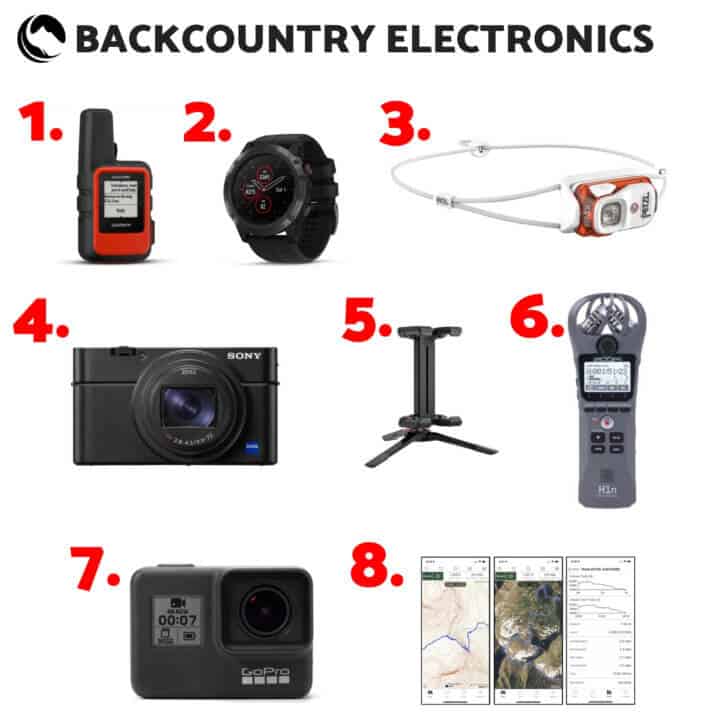
Curmudgeon resistance aside, electronics are part of our backcountry experience and are here to stay. In the old days, backcountry electronics provided marginal benefit and weren’t so reliable in the hostile environment of the outdoors. That’s all changed, and we now have some extremely powerful devices that improve our safety, efficiency, and enjoyment of the backcountry.
1. Garmin inReach Mini 2-Way Satellite Communicator*
The Garmin inReach Mini is the smallest, lightest, and most powerful satellite messaging device on the market. I’ve used the Garmin inReach Mini on every trip since its release this summer, and it’s been the most reliable device I’ve ever used to keep me in touch with my wife via text messaging when I’m on a trip. Learn more by reading my comprehensive review of the Garmin inReach Mini, which earned Backpacking Light’s Highly Recommended Rating.
Why I like it: It gives my wife a level of comfort knowing that I’m OK, and it gives me the option to change my itinerary if needed, and text someone to pick me up at an alternate location!
- MSRP: $400
- Weight: 3.4 oz (97 g)
- Buy Now: REI
2. Garmin Fenix 5X Plus GPS Watch*
I wrote about this watch earlier in this year’s backcountry electronics gear guide and praised this watch as a hiker’s dream: GPS navigation, activity metrics, integration with my athletic training software, and Bluetooth integration to my smartphone and inReach Mini. The Garmin Fenix 5X Plus is a durable and beautifully manufactured GPS watch and is so critical to my ongoing training and fitness that I can’t imagine life without it.
Why I like it: It collects the data I need to monitor my training cycles, and gives me wrist-top access to all the data I need while hiking, including GPS positioning, inReach Mini notifications, and heart rate (exertion) feedback.
- MSRP: $699 – $999
- Weight: 3.2 oz (91 g)
- Buy Now: REI
3. Petzl Bindi Ultralight Headlamp*
I’m rapidly getting over replaceable batteries, and am becoming increasingly attached to rechargeable devices for backcountry use. I carry an external battery (power bank) anyways for recharging my smartphone (which I use for mapping, journaling, and reading), so why not a rechargeable headlamp? The Petzl Bindi is my pick – it’s ultralight, very bright, and has a minimalist, comfortable headband.
Why I like it: Light, bright, little, durable, waterproof, comfortable, rechargeable.
- MSRP: $59.95
- Weight: 1.2 oz (34 g)
- Buy Now: Backcountry
4. Sony RX100 VI
I’ve been making images and movies with the Sony RX100 series since it was released in the summer of 2012. The newest version features a 200mm-equivalent zoom lens, which expands my creativity a lot in the backcountry! Here’s a link to a recent album of unedited photos taken with the Sony RX100 VI from a trip in the Idaho Sawtooths in 2018.
Why I like it: Big sensor, terrific photo processing engine, long zoom range, great video quality.
- MSRP: $1,198
- Weight: 10.6 oz (300 g)
- Buy Now: B&H

5. Joby GripTight One Micro Tripod for Smartphones
As smartphone capabilities increase, I find myself using my phone more and more, especially for video. I don’t often take a tripod into the backcountry on longer trips, but the tiny Joby GripTight One Micro gives me the flexibility to grab a stable shot when I need it. I can decouple the smartphone holder from the actual trip and use the little folding legs on my other cameras as well.
Why I like it: Ultralight and ultra-compact.
- MSRP: $18.99
- Weight: 1.6 oz (45 g)
- Buy Now: B&H
6. Zoom H1N Digital Audio Recorder
Between my smartphone, the Sony RX100, and my GoPro HERO7 (see below), I feel like I have a pretty compact and powerful arsenal of ultralight image-making equipment for backcountry travel. However, they all record low-quality audio. The little Zoom H1N allows me to grab high-quality ambient sounds (footsteps, water in a stream, rain pattering against a tent) and terrific narrative / vocal conversations that I can then plug into my movies later, or use on a podcast.
Why I like it: Broadcast-quality audio recording for ambient sounds and voice, in a very compact and lightweight package.
- MSRP: $79.99
- Weight: 2.1 oz (60 g)
- Buy Now: B&H
7. GoPro HERO7 Black Camera*
I’ve owned GoPro cameras since their first generation. However, the GoPro HERO7 Black is the first model that has me this enthused about using the little action camera. Professional quality footage with high bandwidth, high frame rates, log profiles that can be color-graded in post is a bonus. Out of the box with default settings, the GoPro HERO7 Black is an incredibly capable timelapse and movie-making machine. The best part about the HERO7 Black: it’s terrific image stabilization.
Why I like it: Fast, easy, pro-quality, tiny form factor offers perspectives you can’t get with other cameras, waterproof, stable handheld images!
- MSRP: $400
- Weight: 4.1 oz (116 g), without batteries
- Buy Now: REI
Buy Now at REI
I’m not a professional filmmaker but I love the craft to make memories of our adventures. Here’s a quick video I shot using the GoPro HERO7 Black and edited on my smartphone using LumaFusion a few weeks ago.
8. Gaia GPS App for Smartphone*
I long ago ditched dedicated GPS units in favor of GPS Apps on my smartphones. After cycling through the usual array of popular apps, I finally settled on Gaia GPS for its power, ease of use, speed, and awesome hi-res maps.
Why I like it: Easy to use, terrific user interface, very powerful features, massive map set available.
- MSRP: FREE, Premium Membership $35.99
- Download Now: Gaia GPS
Backpacking Apparel

Choosing clothes for people is a tricky thing – clothing is personal. And in an age of fast fashion, trendy style, and Instagram, making apparel recommendations is sometimes met with resistance. Therefore, I’ve limited my apparel recommendations here to what I believe are clothing items that have the potential for a wide degree of acceptance by a large number of hikers, with an emphasis on versatility and value.
1. Smartwool PhD Light Base Layer Hoodie*
With a very comfortable athletic fit that works great for my own body type, the Smartwool PhD apparel line is probably the most comfortable next-to-skin wool apparel I’ve ever worn. It’s soft, holds its shape, doesn’t pill, and – my favorite feature of wool – is comfortable across a very wide range of temperatures. The Smartwool PhD Light Base Layer Hoodie under a breathable wind shirt like the Patagonia Houdini Jacket is my favorite trekking uniform in the cold, high, windy, mountain environment above the treeline.
Why I like it: Versatile across a wide variety of temperatures, most comfortable next to skin wool I’ve ever worn.
- MSRP: $110
- Weight: 9 oz (255 g), Size Men’s Medium
- Buy Now: REI

2. Smartwool NTS Merino 150 Beanie
It’s hard to wax eloquent about a tiny little beanie cap, but the Smartwool NTS Merino 150 Beanie is too hard to pass up. A high-performance beanie for active use needs to be as light and thin as possible. Fleece is usually too hot for me, and most other merino caps I’ve tried are too thick. This one fits the bill perfectly and may be the most worn piece of headwear in my kit.
Why I like it: Light, pocketable, very comfortable against sensitive skin at the hairline.
- MSRP: $22
- Weight: 0.6 oz (17 g)
- Buy Now: REI
3. Wool Buff
I use synthetic Buffs for summer hiking (they’re lighter) but prefer the Merino Wool Buff for winter, when snowy blizzards demand more face coverage and neck sealing. Merino wool is much more comfortable to breathe through on very cold days when moisture starts icing up the outside of the Buff.
Why I like it: Classic tubular neck gaiter design in a much more comfortable fabric.
- MSRP: $29
- Weight: 1.7 oz (48 g)
- Buy Now: REI
4. Darn Tough Micro Crew Cushion Hiking Socks*
I’m not a sock loyalist. I wear merino wool blend socks from Smartwool, Patagonia, Injinji, and Darn Tough. But the Darn Tough Micro Crew Cushion sock is special. Everything about them is just about perfect for three-season hiking in mild weather when paired with ultralight trail running shoes.
Why I like it: The most versatile hiking sock I’ve used – not too light, not too heavy, not to high, not too low, great fit, durability.
- MSRP: $22
- Weight: 1.9 oz (54 g)
- Buy Now: REI
5. REI Minimalist GTX Mitten Shells
Waterproof mitten shells are only unnecessary until you need them, and then they add a level of warmth and comfort that can’t be taken for granted on cold, wet, windy days. My REI Minimalist GTX Mitten Shells don’t get used often, but when they do get worn, I get really happy. These are light and about as compact as you can get.
Why I like it: Pocketable! Super light! Good security at the wrist cuff.
- MSRP: $44.95
- Weight: 1.4 oz (37 g)
- Buy Now: REI
6. La Sportiva Akyra Trail Running Shoes*
I’ve worn La Sportiva Ultra Raptors for technical hiking for years, but have worn out several pair when the uppers rip out on routes where I’m doing a lot of limestone scrambling or scree skiing. This year, I upgraded to the more durable La Sportiva Akyra, and I’m not lookin’ back. They are the best off-trail backpacking shoe I’ve ever worn.
Why I like it: More durable than Ultra Raptors, very stable and technical last for difficult off-trail conditions (especially scrambling, talus, and sidehilling).
- MSRP: $140
- Weight: 22.7 oz (644 g)
- Buy Now: REI
7. Raidlight Ultra MP+ Waterproof Pants
Rain pants spend most of their time in my pack, so they need to be as light as possible. The ultra-compact Raidlight Ultra MP+ fits the bill well. I find them to be a little less roomy than my other go-to pant, the ZPacks Vertice, but the 4-way stretch more than makes up for it and I appreciate the trimmer fit of the Raidlight while bushwhacking.
Why I like it: Truly ultralight, stows into a tiny space, stretch fabric.
- MSRP: $109.95
- Weight: 3.7 oz (105 g)
- Buy Now: RaidLight
8. Saxx Boxer Briefs
I wrote about backpacking underwear here but I’ve been waiting for the day when I can use the same underwear for both backpacking and daily wear. That day is much closer now than it was a few years ago, and a lot of it has to do with Saxx. Saxx Boxer Briefs are my favorite daily boxer brief and are entirely suitable for just about all of the outdoor activities I enjoy throughout the year.
Why I like it: They do it all – great for running, hiking, backpacking, and daily wear.
- MSRP: $28 – $31.95
- Weight: 3.1 oz (89 g)
- Buy Now: Saxx
9. Patagonia Micro Puff Jacket*
I have lots of good things to say about the Micro Puff Hoody, but always hoped a non-hooded version would be released which would make a better layering piece under a rain jacket. It’s here! And also in a vest version.
Why I like it: non-hooded, full-zip version is lighter, more packable, and a better layering piece under raingear while retaining all the benefits of the Micro Puff line.
- MSRP: $249
- Weight: 8.3 oz (235 g)
- Buy Now: Patagonia
10. Patagonia Micro-D Fleece Pullover
An ultralight fleece under a rain jacket is one of my best defenses for staying warm and comfortable while trekking in the nastiest, wettest, windiest, coldest conditions I encounter. My choice is the double-faced Patagonia Micro-D, which is extremely breathable while capturing enough warmth to fend off hypothermia at short rest breaks.
Why I like it: One of the lightest possible fleece layers available for layering under raingear in extremely hostile (wet, cold, wind) conditions.
- MSRP: $59
- Weight: 9.1 oz (258 g)
- Buy Now: Patagonia
Cooking and Hydration
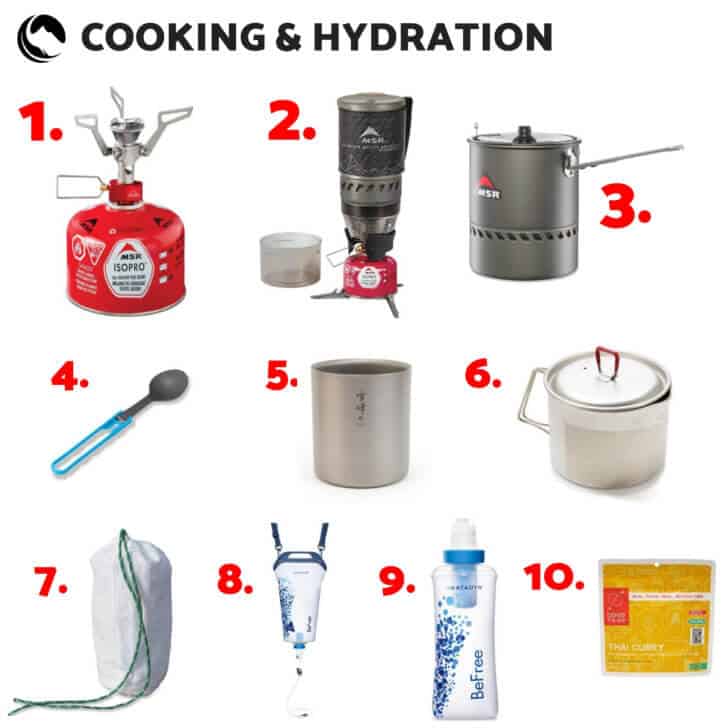
I’m going to focus on stoves here, but I’ll list my recommendations for other cooking and hydration items as well. The reason I want to focus on stoves is that there’s a lot of confusion and bad teaching out there about how to choose a stove. Here’s my very, very short mini guide:
- Solid fuel and alcohol stoves are fine for short trips, small water volumes, and incidental cooking, but are finicky to use in windy conditions and fuel efficiency is low.
- Sit-on-top canister stoves are the most popular type of stoves for lightweight backpackers, with enough power to be versatile across a wide range of temperatures and weather conditions.
- Integrated canister stoves are generally the most fuel efficient and fastest method of boiling water.
- Liquid fuel stoves are best for large water volumes (3L+) and group use.
Also, keep in mind that I have a personal bias towards MSR gear. I’ve used it for more than 30 years and have found its carefully engineered products to be more consistently reliable and durable than any other cooking brand, especially with stoves.
1. MSR PocketRocket 2 Stove*
After experiencing the frustration of numerous stove failures through the years, I’ve become extremely picky about durability and manufacturing quality, and will happily accept an extra ounce or two for a stove that reliably allows me to start my day with coffee. After investigating dozens of stoves as part of our upcoming canister stove gear guide, I’ve settled on the MSR PocketRocket 2 as my go-to sit-on-top canister stove. I used it during the Wilderness Adventures Whitetail Trek in September and was so impressed with its power in the wind, pot stability, and quality that it’s starting to take the place of the integrated canister stoves that I usually take on alpine treks.
Why I like it: Powerful, durable, and lightweight stove works great in all but the windiest conditions.
- MSRP: $44.95
- Weight: 2.6 oz (74 g)
- Buy Now: REI
2. MSR WindBurner Stove System
Having been a Jetboil Sol Ti fan for many years, I was absolutely blown away when MSR released the Windburner. MSR solved the problem that’s been Jetboil’s Achilles’ heel since it was launched on the market – poor wind performance. Don’t believe me? Check out our data here. The MSR WindBurner is my favorite stove when I know I have to do some food simmering in windy conditions above the treeline while trekking in the alpine.
Why I like it: Best stove I’ve used for simmering food on low flame in windy conditions.
- MSRP: $149.95
- Weight: 15.5 oz (539 g)
- Buy Now: REI
3. MSR Reactor Stove System
Raw power. That’s what the MSR Reactor is all about. And that’s why it’s my winter stove of choice for cooking in a windy blizzard or melting snow. When I want boiling water in very cold, very windy, snowy environments, and I don’t want to fiddle around with liquid gas, the Reactor gives me exactly what I need. In the winter, this stove very nearly qualifies as essential safety gear.
Why I like it: A virtually “storm-proof” stove that has the power to melt snow and boil water very fast in cold, windy blizzards.
- MSRP: $239.95
- Weight: 19 oz (539 g)
- Buy Now: REI
4. MSR Folding Spoon*
Why I like it: Virtually unbreakable, very compact, much lighter than my old titanium utensils.
- MSRP: $3.95
- Weight: 0.35 oz (10 g)
- Buy Now: REI
5. Snow Peak Ti-Double H450 Mug
Why I like it: Beautiful no-handle design, lightest double wall mug, superb for both trail and daily use!
- MSRP: $49.95
- Weight: 3.5 oz (99 g)
- Buy Now: REI
6. MSR Titan Tea Kettle*
Why I like it: Much higher quality than the Toaks 750 with a tighter fitting lid, more fuel-efficient shape, larger volume.
- MSRP: $59.95
- Weight: 4 oz (113 g)
- Buy Now: REI
7. Ursack S29 | Ursack S29 XL*
Why I like it: So much nicer to carry in your pack than a hard-sided bear canister.
S29: Buy Now at REI S29 XL: Buy Now at REI
8. Katadyn Gravity BeFree Water Filtration System
Why I like it: Light, very simple to use, lots of water can be treated in very little time.
- MSRP: $69.95
- Weight: 6.8 oz (193 g)
- Buy Now: REI
9. Katadyn BeFree Collapsible Water Filter Bottle (20 oz)*
Why I like it: The fastest method to get drinkable water.
- MSRP: $39.95
- Weight: 2.3 oz (65 g)
- Buy Now: REI
10. Good to-Go Freeze Dried Dinners*
Why I like it: Vegetarian, very good flavor, no gross ingredients. My favorites are Thai Curry and Herbed Mushroom Risotto, which I reviewed here.
- MSRP: $6.50 – $12.95
- Weight: 3.4 oz – 6.6 oz
- Buy Now: REI
Consumable Supplies
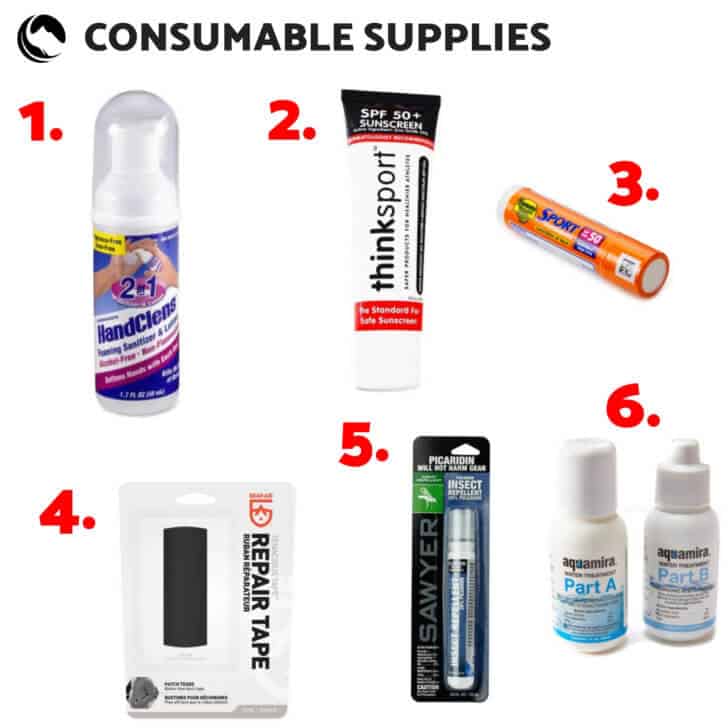
At the beginning of the season, I like to purchase my consumable supplies in bulk, so I never run out. I’ve been using most of the items in this section for several years, but a new item made the list this year (the Thinksport sunscreen) – an easy-to-spread, non-greasy zinc oxide formulation.
1. Adventure Medical Kits Alcohol-Free Hand Sanitizer*
Why I like it: Sans alcohol is great for cold temperature use, benzalkonium chloride is one of the best for hygiene.
- MSRP: $5.50
- Buy Now: REI
2. Thinksport Sunscreen SPF 50*
Why I like it: Smooth application and resistant to sweat and water dilution, but it’s still zinc oxide!
- MSRP: $12.95
- Buy Now: REI
3. Banana Boat Sport Sunscreen Lip Balm – SPF 50*
Why I like it: No flavor, resilient, very protective even in wind, snow, water, and high altitude sun.
- MSRP: $2.25
- Buy Now: REI
4. Gear Aid Tenacious Tape Repair Tape*
Why I like it: Sticks to most fabrics, easy to shape, resistant to washing and wearing and bending more than other repair tapes.
- MSRP: $4.95
- Buy Now: REI
5. Sawyer Premium Picaridin Insect Repellent 0.5 oz
Why I like it: My favorite non-toxic insect repellent in my favorite form factor – a tiny spray tube!
- MSRP: $3.00
- Buy Now: REI
6. Aquamira Water Treatment*
Why I like it: My go-to water treatment chemical for the past 15+ years, imparts no foul flavor, and chlorine dioxide does a better job at penetrating particle-attached biofilm than iodine or chlorine, making it a more efficacious option for water that is anything less than crystal clear.
- MSRP: $14.95
- Buy Now: REI
Travel and Packing, Etc.

1. GORUCK GR1 Rucksack*
In industries (travel luggage, outdoor packs) that have become infected with fashion, trendy designs, and product line turnover, GORUCK has remained blissfully immune to it all. Utilitarian designs, understated but luggage-worthy fabrics, and manufacturing that focuses on durability over the speed of construction are the hallmarks of my favorite travel pack, the GORUCK GR1 Rucksack.
Why I like it: It’s going to last my whole life, holds enough to travel with my computer, clothes, dopp kit, and more.
- MSRP: $395
- Weight: 3.2 lb (1.5 kg)
- Buy Now: GoRuck
2. Hyperlite Mountain Gear Organizational Backpack Pods*
Why I like it: Waterproof, packs gear with less dead space than cylindrical stuff sacks. I use one for sleeping gear and camp clothes (quilt, pad, pillow, puffy jacket, long underwear bottoms, extra socks), one for shelter (shelter, stakes, ground cloth, pole jack), and another for food.
- MSRP: $43.50 – $51
- Weight: 1.2 oz (34 g) to 1.8 oz (35 g)
- Buy Now: HMG
3. Sea to Summit Ultra-Sil Stuff Sack*
Why I like it: My favorite stuff sack fabric, very water resistant, high-quality manufacturing.
- MSRP: $11.95 to $16.95
- Weight: 0.4 oz (11 g) to 1.0 oz (28 g)
- Buy Now: REI
4. Black Diamond Alpine Carbon Cork Trekking Poles*
Why I like it: Highest quality trekking pole I’ve ever used, most durable carbon pole I’ve ever used, FlickLock Pro lever clamp locks are absolutely secure in all conditions. If you are looking for ultralight trekking poles, check our recent trekking pole gear guide.
- MSRP: $169.95
- Weight: 17 oz (482 g)
- Buy Now: REI
5. Hyperlite Mountain Gear Stuff Sack Pillow*
Why I like it: Dual use item is more comfortable when stuffed than stuff sacks, fleece feels great against the skin. We reviewed the pillow in more detail here.
- MRSP: $37
- Weight: 1.16 oz (33 g) to 1.69 oz (48 g)
- Buy Now: HMG
6. Qalo Silicone Wedding Ring*
Why I like it: I never have to remove it, I never notice it, it will never fall off in cold or wet conditions.
- MSRP: $19.95
- Weight: 1.3 oz
- Buy Now: REI
Lesser Known and Cottage Brand Gear
- Quilts: During warmer seasons, I use quilts rather than sleeping bags. My favorite quilt is the Katabatic Gear Chisos, a 40 degree F rated quilt that weighs only 14 oz. I’ve had the Chisos since 2012 and have used it heavily every summer since.
- Packs: Comfort and load-carrying ability are attributes that seem lost in the ultralight backpacking market for loads in excess of 20 pounds. A custom-built McHale Windsauk is my go-to pack for expeditions where I know my pack is going to be “heavier” rather than “lighter”. I’ve used McHale packs for almost 15 years now, and have yet to find a pack that carries any load over 20 pounds more comfortably. I still use and prefer a Hyperlite Mountain Gear Porter 5400 (which I reviewed this year here) for light-and-large loads for packrafting trips where I need pack volume and a low-water absorption pack.
- Down Apparel: I’m a big fan of down-filled apparel for dry climates during the winter, including the US Rockies, where I live and do most of my hiking. I use a Feathered Friends Helios during the deep freeze of winter here, which has one of the highest warmth-to-weight ratios of any jacket on the market. For ultralight down pants, check out Goosefeet. I have a Goosefeet jacket and pants and they are my favorite insulation for summertime conditions where it’s dry.
- Ground Cloth: Need an ultralight ground cloth? Pass on nylon or Tyvek (it’s heavy), DCF (it’s expensive), mylar space blankets (not durable), and check out cheaper and lighter and tougher Polycro. I’ve used Polycro for the past ten years and haven’t found anything better. Repairs easily with Tyvek tape.
- Raingear: For a set of raingear that is light, functional, extraordinarily breathable, the ZPacks Vertice collection is well worth a look. I’ve been using the jacket off and on this summer and fall and it provides a very good performance-to-value ratio.
- Shelters: I got my hands on an early model TarpTent Notch Lithium this year that we reviewed this spring, and can confidently say that this is the lightest – and most aesthetically designed – double-wall tent on the market. DCF fabric, a stable design, and trekking pole structure make this a very compelling option for ultralighters and thru-hikers. Otherwise, my pick for a solo all-season ultralight shelter is the Locus Gear Khufu DCF-B, which I’ve used for several years, and the Hyperlite Mountain Gear Ultamid 4 for sharing with pals.
Experiences and Services
If you want to give or receive experiences instead of gear, consider one of these!
How to GIFT a Backpacking Light Membership, Webinar, Online Course, or Wilderness Adventures Trek
When you click the “Buy Now” button for any of these products, you’ll be taken to a checkout page. Be sure to check the “Is this a gift?” Checkbox!

Backpacking Light Membership
A Backpackinglight.com Membership is the primary source of revenue for us. It allows us to maintain the website and forums, pay honoraria to authors in our community, and fund public projects like the Podcast and Film Festival.
- A Basic Membership gives you posting privileges in our forums and access to a limited selection of Members-only content.
- A Premium Membership adds access to our entire 2,100+ article content library (4+ million words) of gear info, wilderness skills training, expedition reports, and more.
- An Unlimited Membership adds access to the Publisher’s Blog, free enrollment in all Webinars, and early enrollment privileges and tuition discounts for our Wilderness Adventures Program. Proceeds from Unlimited Membership sales are the primary mechanism that helps us fund publicly available content (e.g., the podcast) and events (e.g., the film festival)
Buy or Gift a Subscription Now
Webinars
Backpacking Light webinars were launched in 2018 as a means of exploring topics in more technical depth. They are a great way to experience outdoor science, engineering, and design in a way that’s just not available anywhere else.
The 2018 Webinar Series included:
- Synthetic Insulation in Lightweight Outdoor Apparel and Sleep Systems
- Dyneema Composite Fabrics
- Backpacking Food and Nutrition
2019 will explore topics that include route planning and navigation skills, trekking pole science, film and photography techniques, and more!
Online Course: Ultralight Backpacking Boot Camp
Our signature online course Ultralight Backpacking Boot Camp is the most comprehensive collection of video lessons about ultralight backpacking available and is targeted to people who want to learn a solid foundation of ultralight backpacking philosophy, gear knowledge, and wilderness skills.
Buy or Gift the Boot Camp Now
Wilderness Adventures Trek Enrollment
For a pinnacle experience in a wild and remote wilderness, spent with other ultralight backpackers who are passionate about exploring more with less, consider taking a guided Wilderness Adventures trip with us!
- Enrollment is now open for 2019 treks, including guide training programs.
- Take a look at a photo essay from the 2018 Whitetail Trek!

Navigating through off-trail terrain in the Absaroka-Beartooth Wilderness on the 2018 Wilderness Adventures Whitetail Trek.
National Parks Pass
Support your National Parks and buy an annual 2018-2019 America the Beautiful National Parks Pass (or the 2019-2020 Pass here). My top recommendation for a birthday, anniversary, graduation, or wedding gift!
Buy a National Parks Pass at REI
REI Membership
Our nation’s largest outdoor retailer is a member-owned co-op that gives back a 10% dividend on all purchases to its members. Add to that benefit it’s powerful lobbying voice for preserving human-powered recreation on public lands, local education clinics at its stores, supporting cultural diversity in outdoor recreation, and its contribution to trail building from local trails to national long-distance trails, and an REI Membership ends up being a pretty good deal for all of us as a community.
Buy an REI Membership
Author’s Disclaimer
The gear in this gear guide represents my personal recommendations for ultralight and lightweight backpacking gear.
The choices are my own and reflect gear that I actually use. They are not based on any sort of consensus among the Backpacking Light staff. No manufacturer has negotiated or paid for a product placement here, as is the convention in so many online gear guides. As such, the gear I recommend here reflects my own personal style of hiking and camping.
Disclosure
- How we acquired these products: Product(s) discussed in this review were either acquired by the author from a retailer or otherwise provided by the manufacturer at a discount/donation with no obligation to provide media coverage or a product review to the manufacturer(s), or the products were purchased at full retail price from a retailer.
- We do not accept money or in-kind compensation for guaranteed media coverage: Backpacking Light does not accept compensation or donated product in exchange for guaranteed media placement or product review coverage.
- Affiliate links: Some (but not all) of the links in this review may be “affiliate” links, which means if you click on a link to one of our affiliate partners (usually a retailer site), and subsequently make a purchase with that retailer, we receive a small commission. This helps us fund our editorial projects, podcasts, instructional webinars, and more, and we appreciate it a lot! Thank you for supporting Backpacking Light!
- Stock photos are from manufacturing and/or retail suppliers. Other photos are the authors unless otherwise noted.

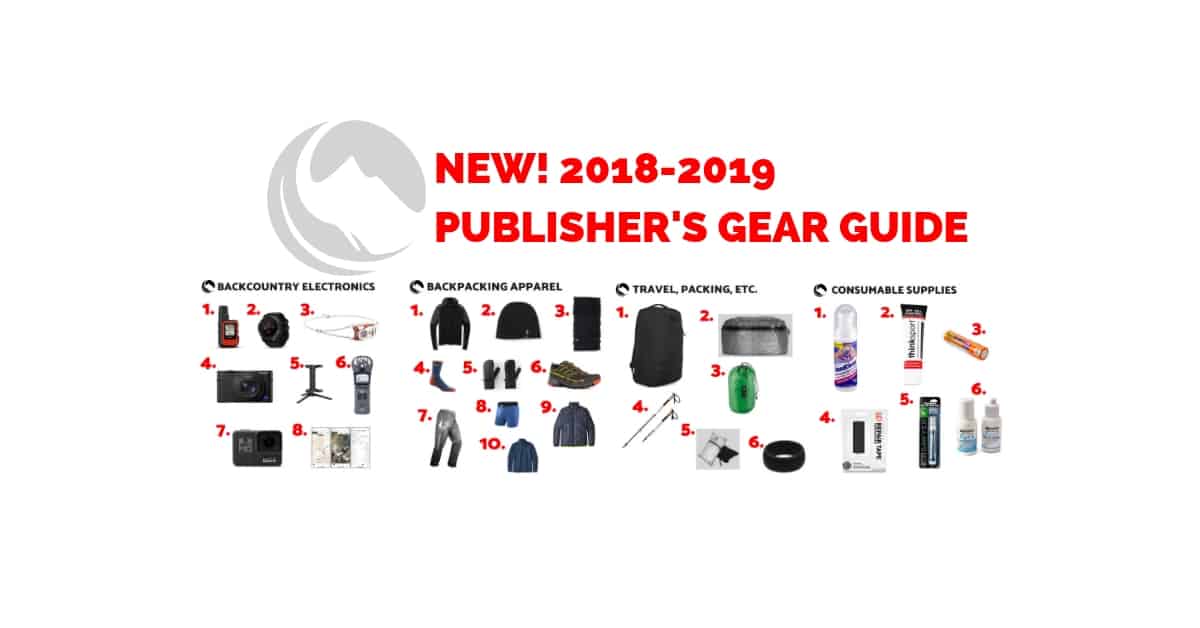

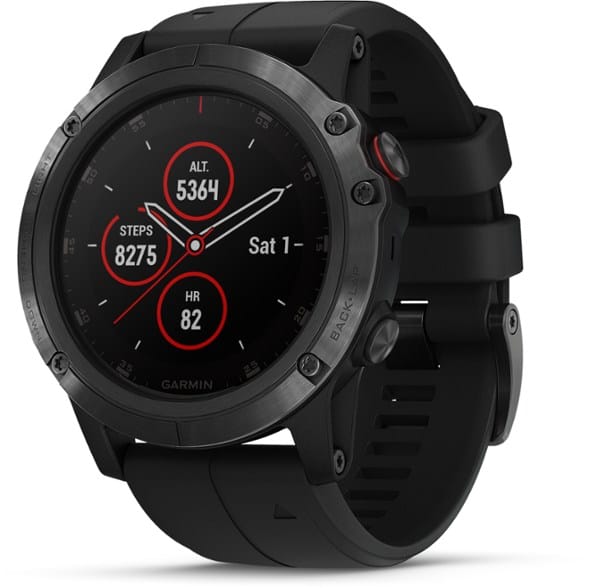


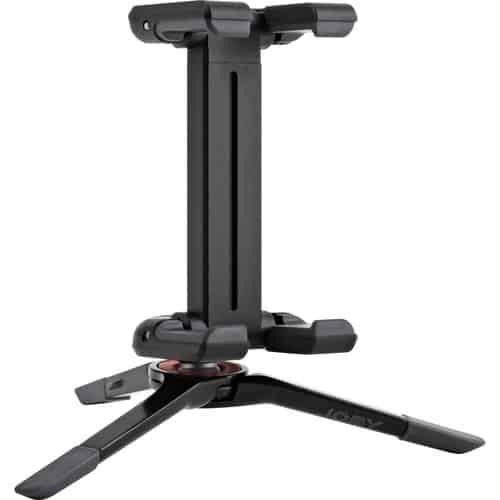


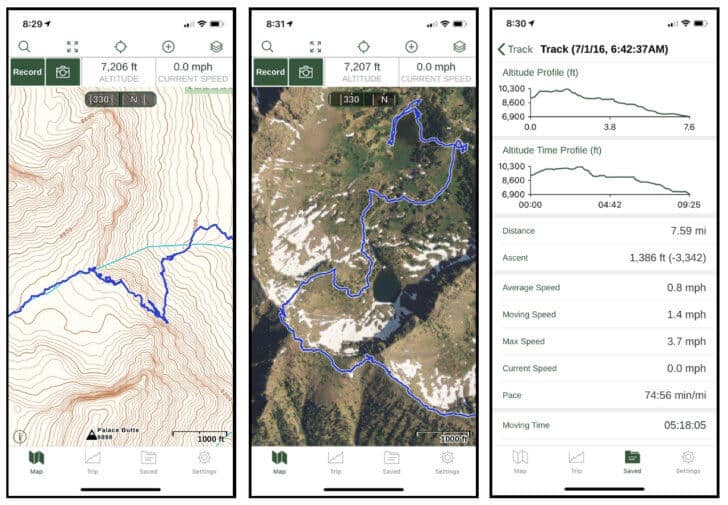

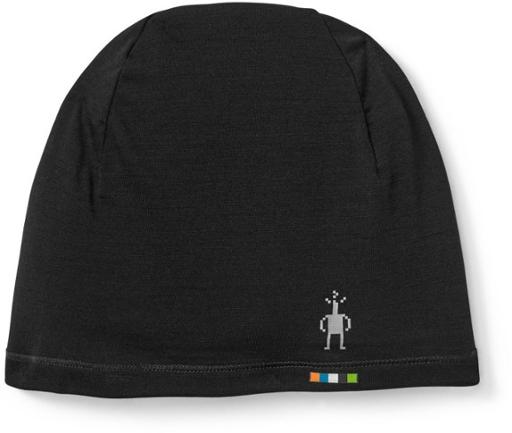
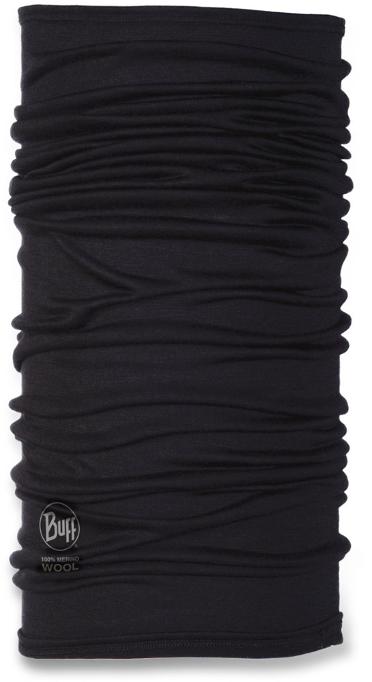
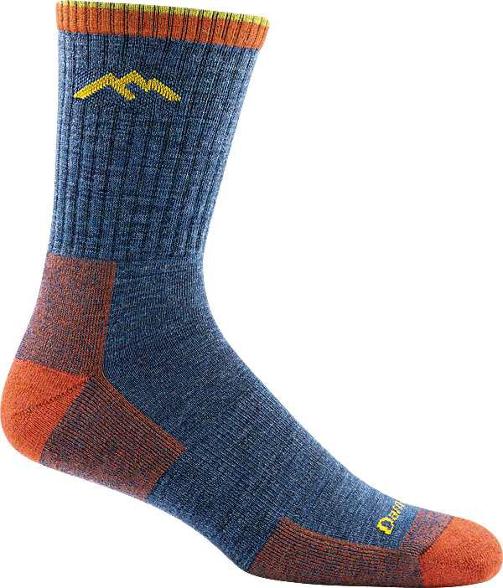
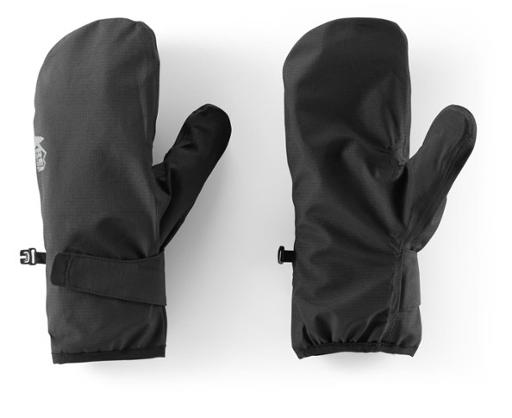
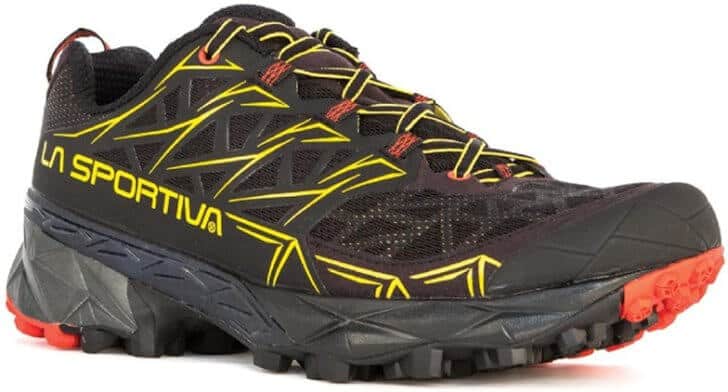

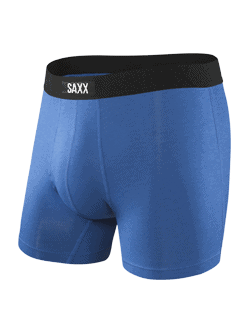
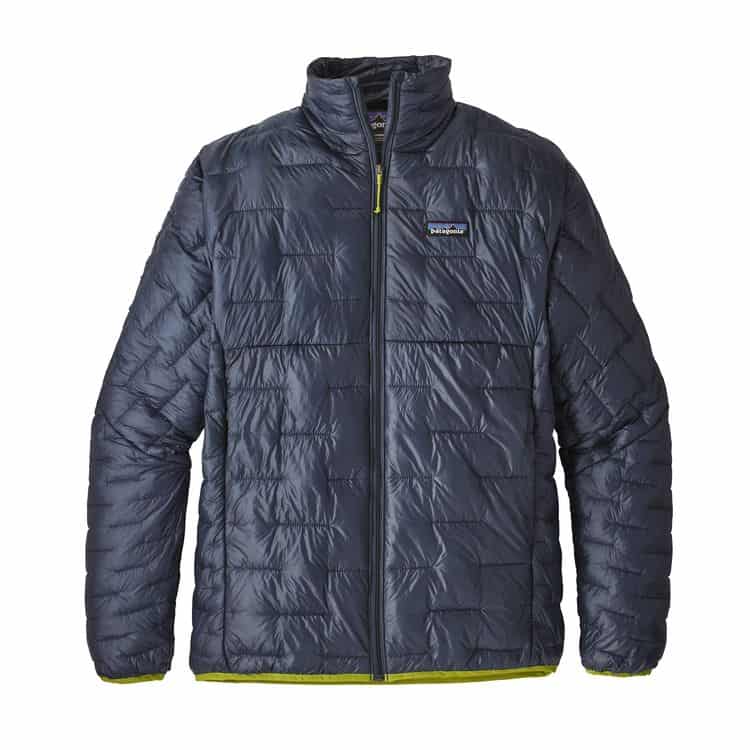
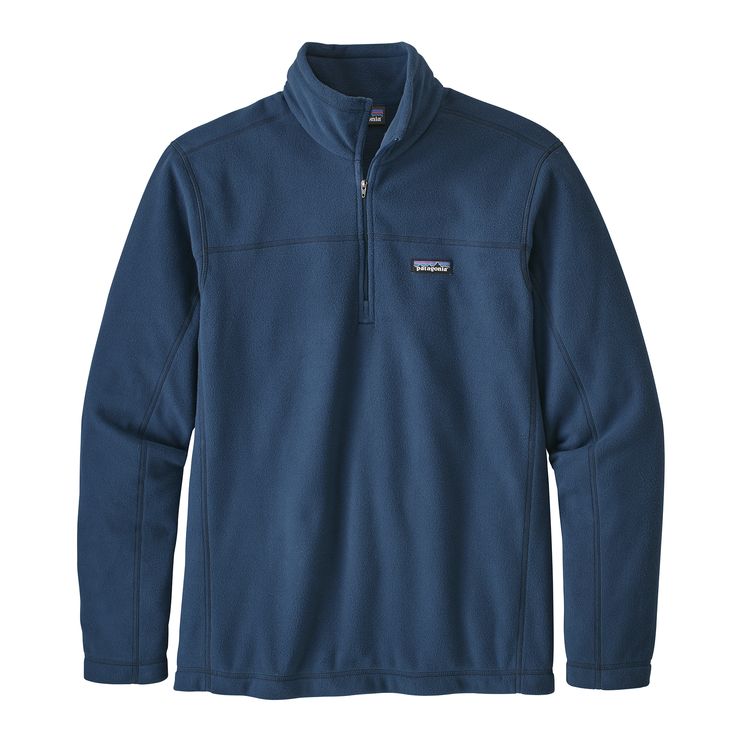
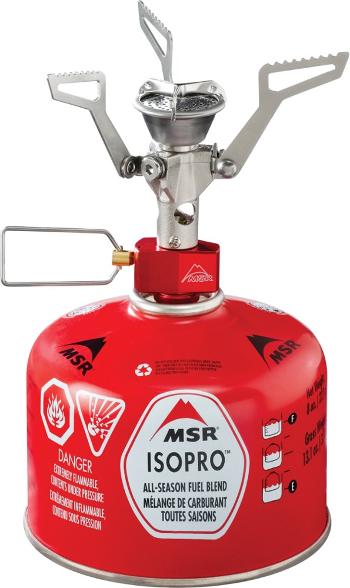
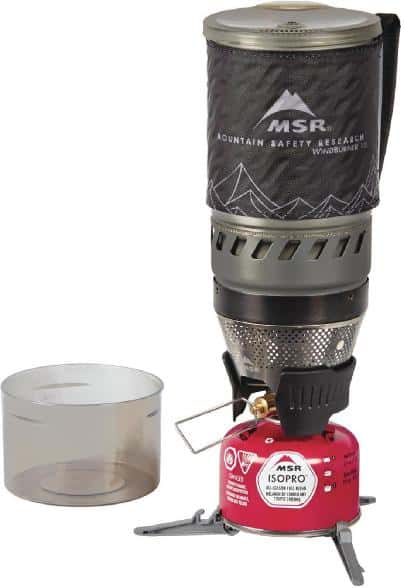
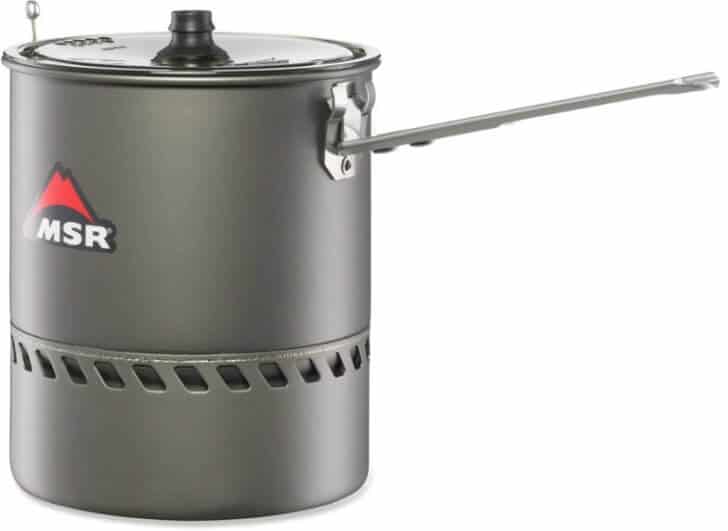

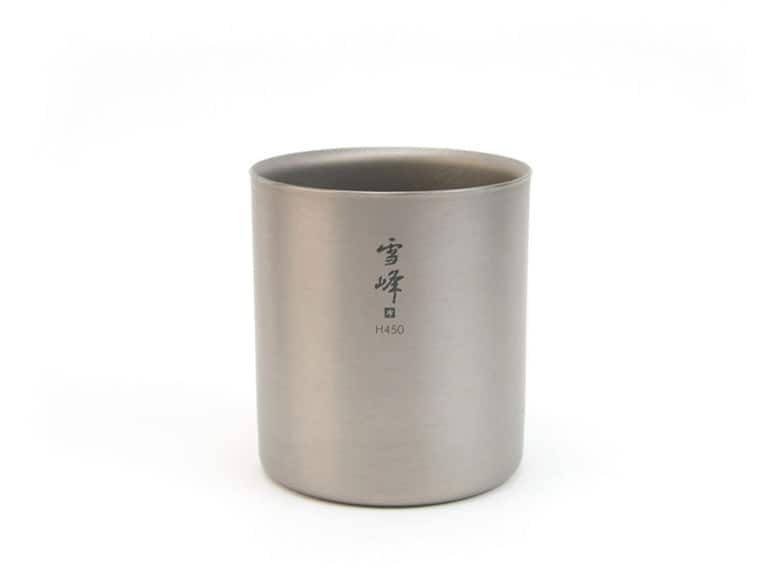
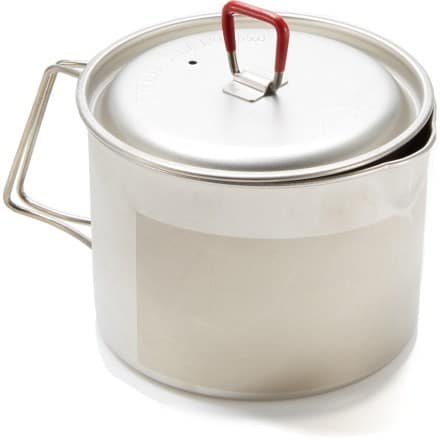
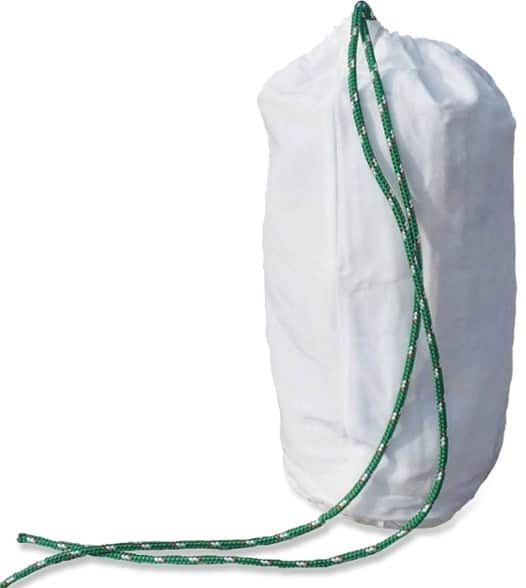

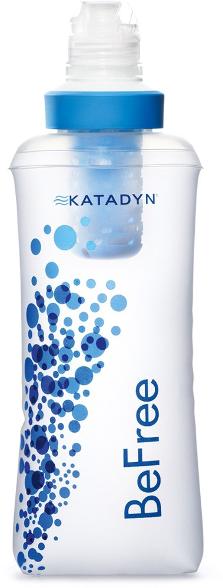



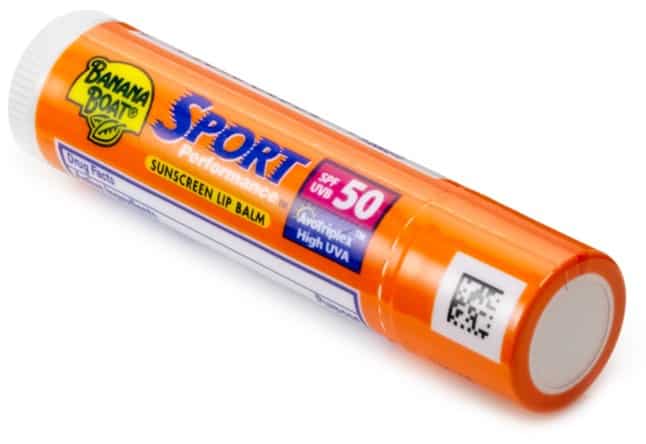


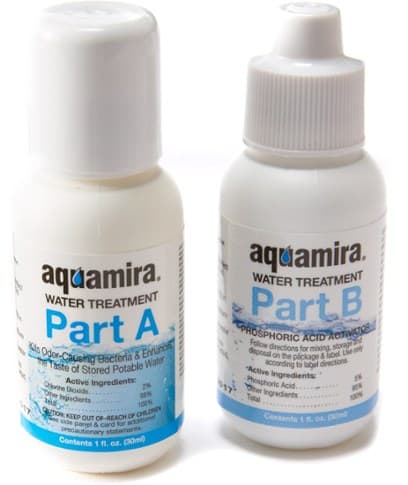
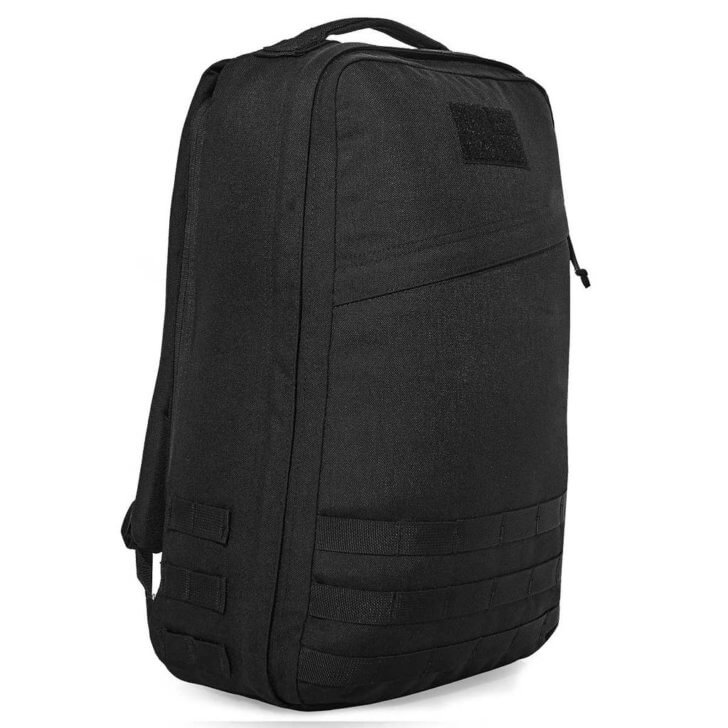
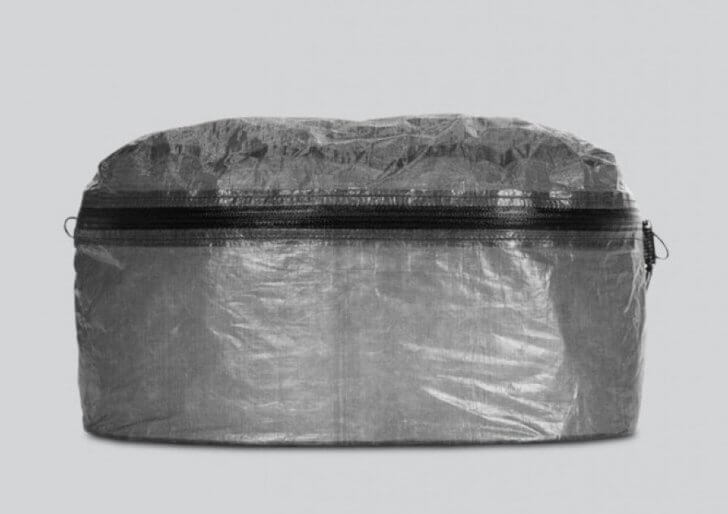

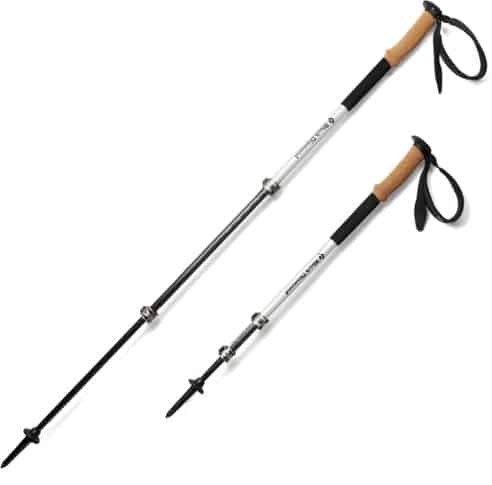

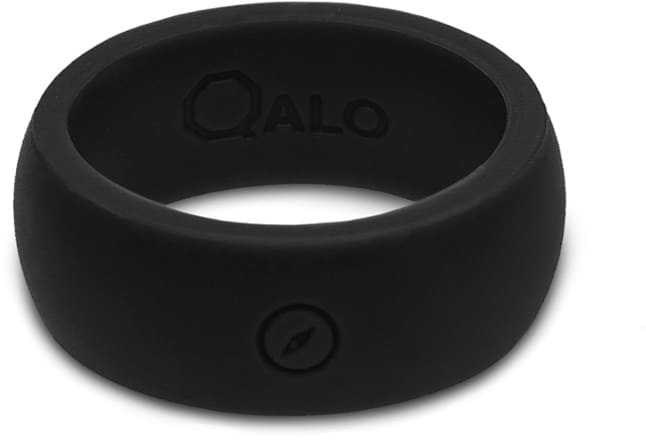
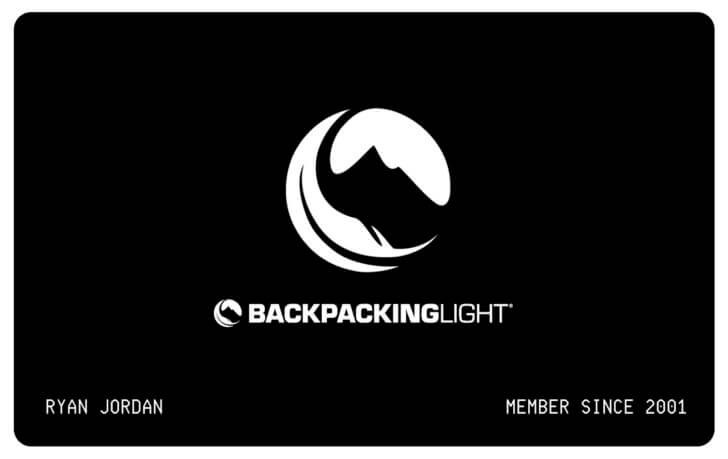

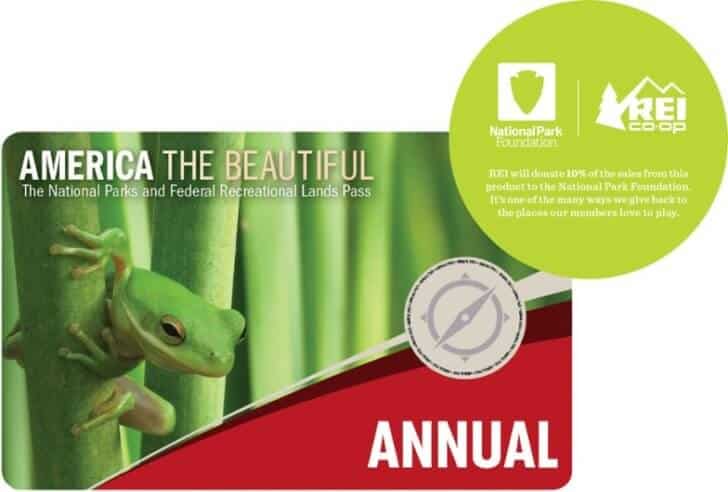
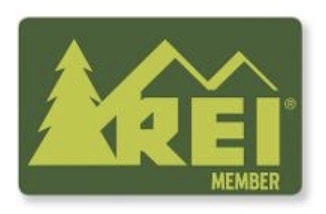


Home › Forums › Publisher’s Gear Guide (2018-2019)